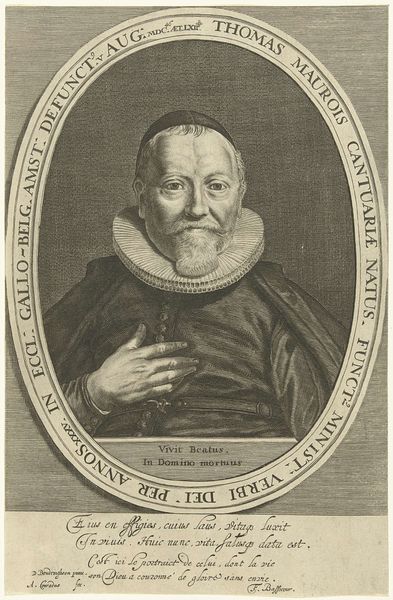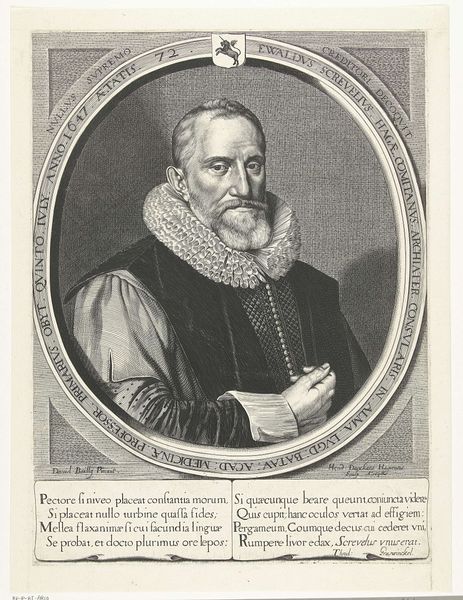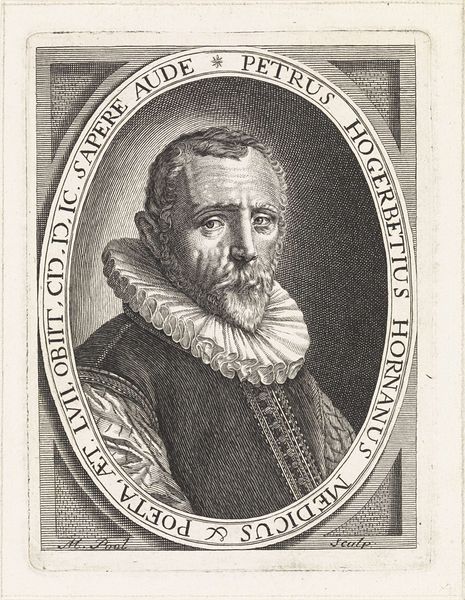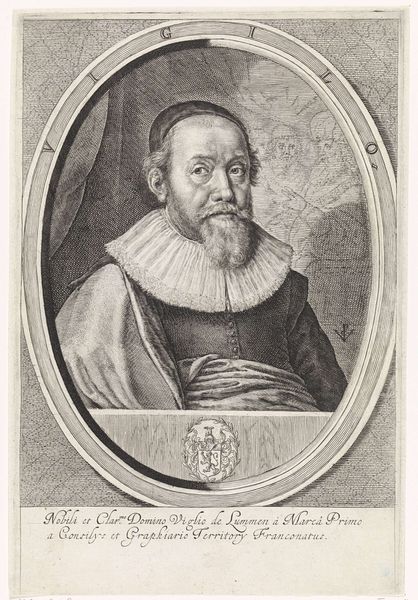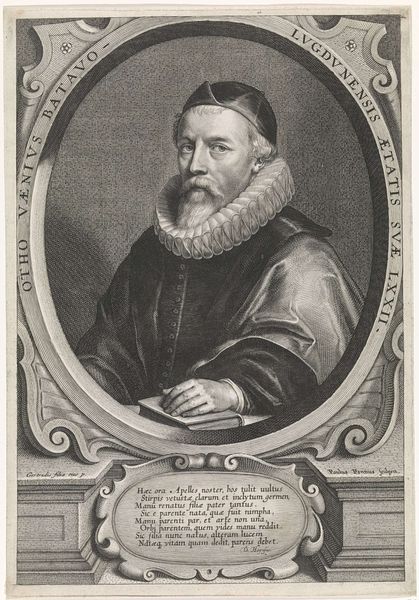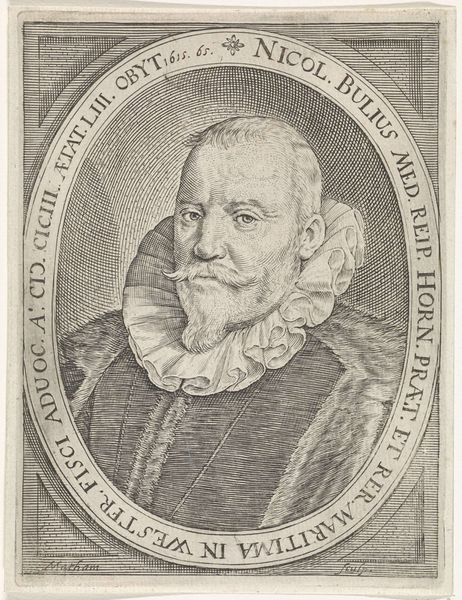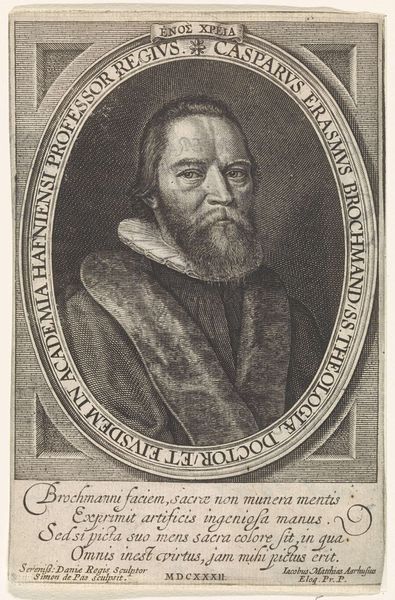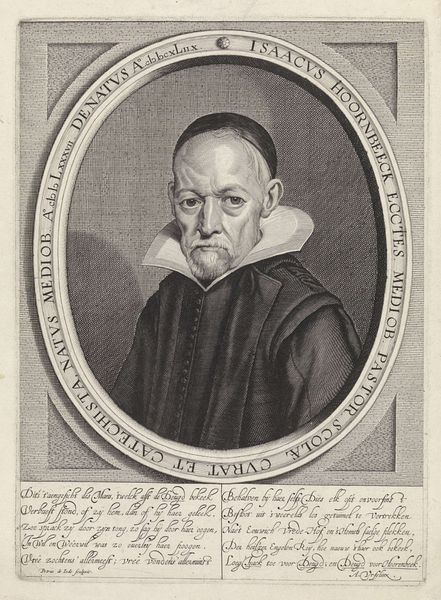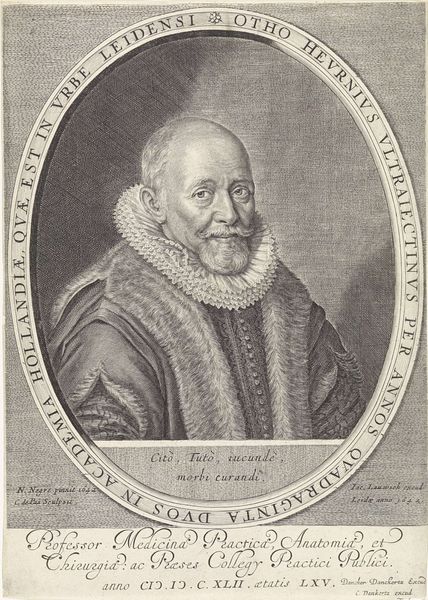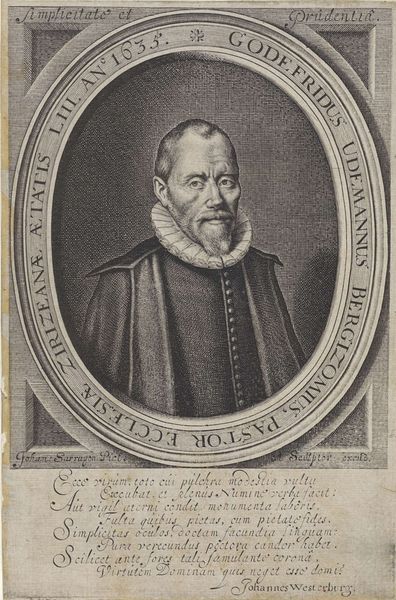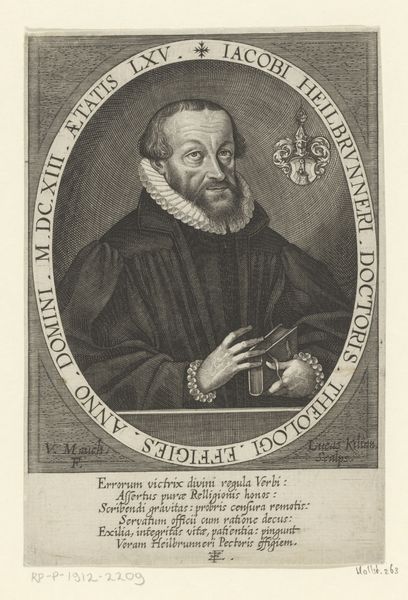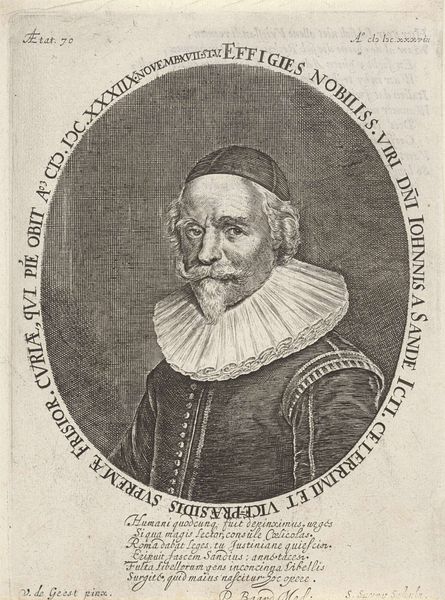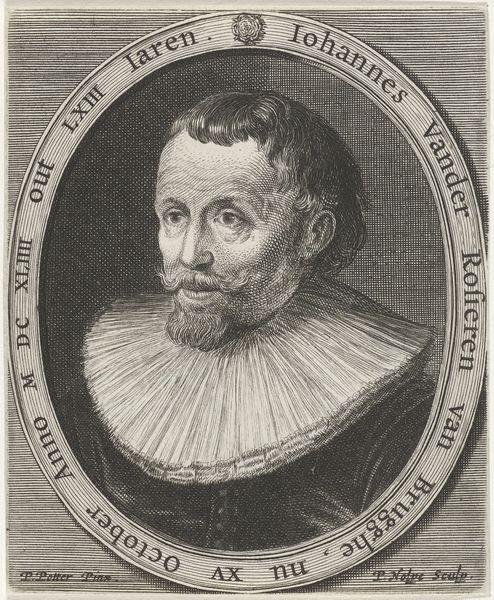
print, engraving
#
portrait
#
aged paper
#
baroque
# print
#
old engraving style
#
portrait drawing
#
engraving
Dimensions: height 293 mm, width 193 mm
Copyright: Rijks Museum: Open Domain
Editor: We're looking at "Portrait of Thomas Maurois," a print by Theodor Matham, made sometime between 1646 and 1676. It's got that old engraving style look, and the man seems… well, stately but kind. What do you see in this piece? Curator: Beyond the individual, I see the deliberate construction of a public image. Think about it: Matham was commissioned to create this print, which means this image of Maurois served a specific purpose within his community. Consider the Baroque period; portraits were not simply likenesses, but statements of social standing and affiliation. Editor: Affiliation with… whom? What groups were common in 17th century Amsterdam? Curator: Excellent question! The Latin inscription provides clues. "Eccl. Gallo-Belg. Amst." suggests ties to the Walloon Church of Amsterdam. This community of French-speaking Protestants, who fled religious persecution. Consider how that reality – of religious tension, refuge, and the need to cultivate a supportive community - would influence their social and political life. Notice, too, how the text surrounding his portrait almost frames him as saintly. Editor: So the portrait becomes a kind of advertisement for the Walloon Church itself, saying, "Look at the kind of learned and pious men we produce." Curator: Precisely! And it's important to remember how these images circulated. Prints were relatively inexpensive and easily disseminated, making them powerful tools for shaping public opinion. These were tools for reputation. What else catches your eye? Editor: I hadn’t considered it as propaganda, just a portrait. Thinking of it that way gives me so much more to think about. Thanks. Curator: The intersection of art and its public life, there are entire power structures implicated here!
Comments
No comments
Be the first to comment and join the conversation on the ultimate creative platform.
